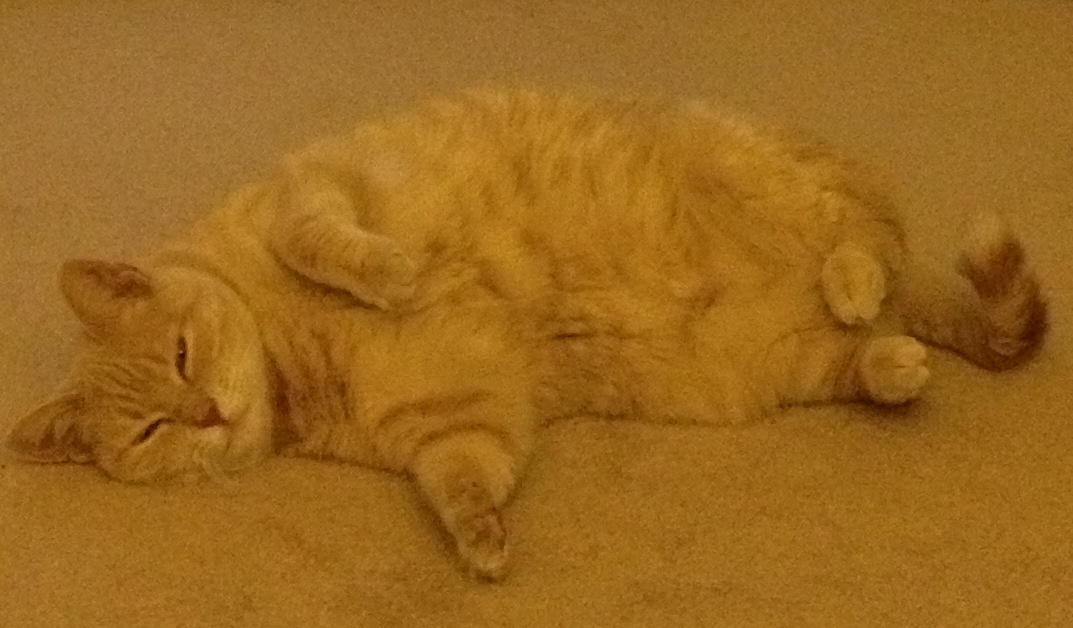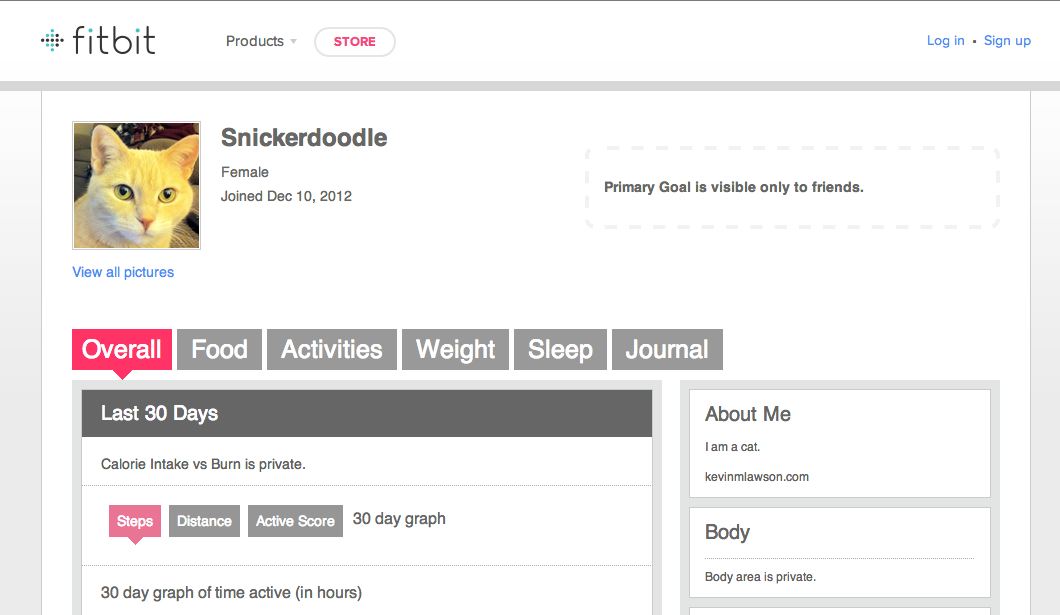I’ve been wearing a Fitbit Tracker for about two and a half years now. Recently I replaced my original “Classic” tracker with a newer model, which has freed up the old one for use in answering a question I’ve had from day one:
What would happen if I attached this to a cat? How much exercise does an indoor cat get, really?
The Cat
Snickerdoodle (“Snickers” for short) is a seven-year-old domestic shorthair (mutt) that was found as a stray and nursed back to health by my parents when I was in college. I took her in a few months after getting my own house. Now that she’s an indoor cat, she no longer gets chased by Labradors, but she no longer gets to chase rabbits, either. Despite being on a low-calorie dry food for years, this decline in exercise has made her noticeably more plump than she was during her adventurous outdoor-cat days in the country.

The Setup
I configured my old Fitbit tracker and taped it to an adorable pink safety collar. My cat now has her own Fitbit profile.
The Plan
I am not sure what to expect from the data. Fitbit trackers were presumably designed only for measuring human activity, but I would imagine that when Snickers runs full bore down the hallway in the middle of the night, the tracker will pick up something.
Snickerdoodle’s usual experience with collars is that they are the immediate antecedent to a scary car ride and veterinary examination, so the first day or so may entail a lot more hiding and moping than normal; her activity may be a bit low initially. After a week or two of baseline I may try new cat toys to see how much they affect her average activity.
